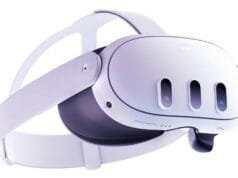
The dawn of the fourth industrial revolution is upon us, and it’s being powered by a convergence of augmented reality (AR), virtual reality (VR), artificial intelligence (AI), and 3D technology. As the metaverse unfolds, these technologies are not only reshaping industries but also redefining how businesses innovate and expand.
Key Highlights:
- Immersive mixed reality technologies, including AR and VR, are pivotal to business innovation.
- AR and VR are expected to surpass 100 million users globally by 2027.
- The distinction between AR and VR lies in the user experience and devices used.
- Mixed reality (MR) merges the physical and digital realms, enabling real-time interaction.
- 3D, AI, and machine learning are integrating with AR and VR, enhancing sectors like e-commerce, manufacturing, and healthcare.
The metaverse, a term that has gained significant traction in recent years, is essentially a collective virtual shared space created by converging virtually enhanced physical reality and physically persistent virtual reality. At its core, it’s about creating shared experiences in a virtual world. And the technologies driving this are AR and VR.
Understanding AR and VR:
AR and VR, while related, offer distinct experiences. Augmented reality enhances our real-world environment by overlaying it with digital data, such as images, videos, and 3D models. This digital content is displayed in real-time, often using devices like smartphones, tablets, or specialized AR glasses. On the other hand, virtual reality immerses users in a completely digital environment, often unrepresentative of the real world. This immersion is achieved using VR headsets, creating an environment that’s interactive and responsive to user movements.
The Role of 3D and AI in the Metaverse:
One of the critical aspects of mixed reality applications is the precise overlay of an object’s model or its digital twin. This overlay aids in providing work instructions, training, and identifying errors in manufacturing. While many on-device object tracking systems use 2D image-based tracking, the real challenge lies in achieving overlay accuracy in 3D. This is where AI comes into play. AI, with its computational capabilities, can estimate depth with high accuracy, ensuring that the overlay remains aligned even as the user navigates the virtual environment.
The Future of Industry 4.0 in the Metaverse:
As businesses delve deeper into the metaverse, the need for accurate and efficient data processing becomes paramount. The metaverse demands the processing of vast amounts of data at incredible speeds. This is where cloud environments come into play, allowing businesses to launch and manage new tools for scalable operations. Moreover, the fusion of the real and virtual worlds requires rendering complex models in photorealistic detail, a feat achieved using GPUs from servers and delivering the rendered frames to head-mounted displays.
In Conclusion:
The metaverse, powered by AR, VR, AI, and 3D technology, is not just a buzzword; it’s the future of how businesses will operate, innovate, and expand. As we stand on the cusp of the next industrial revolution, it’s clear that the organizations that embrace these technologies will not only thrive but also redefine the standards of business operations and customer experiences.










